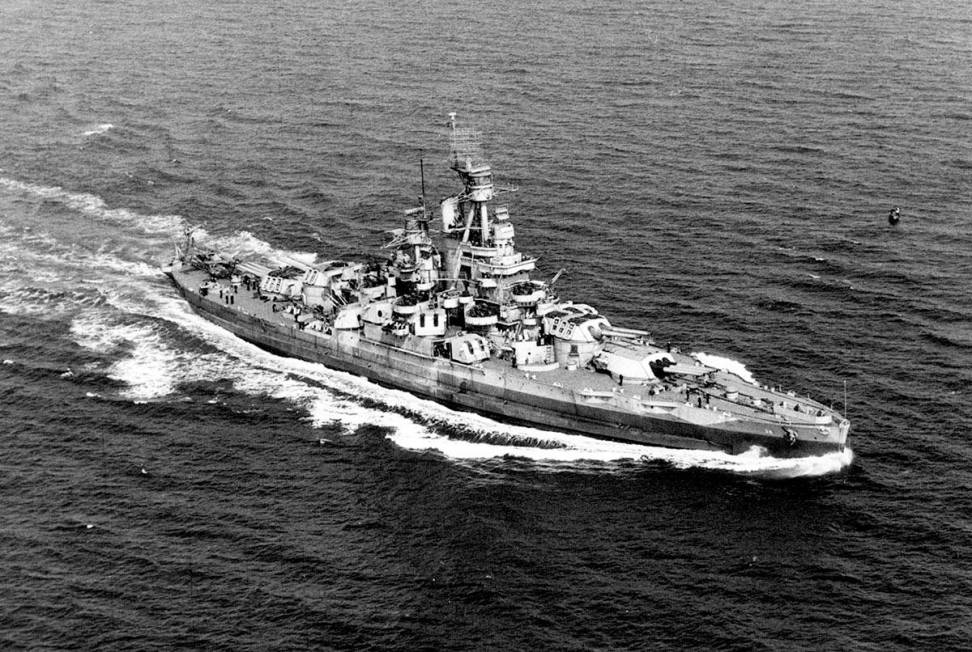Explorers film wreck of ‘iconic’ USS Nevada in Pacific Ocean

A private underwater search firm has visited the USS Nevada, some 65 nautical miles southwest of Pearl Harbor and more than 15,400 feet below the surface of the Pacific Ocean.
SEARCH Inc. issued a news release Monday, saying it made the discovery with a marine robotics company called Ocean Infinity. The partners used a vessel called Pacific Constructor to visit the deep-sea wreck.
The battleship wasn’t really lost because the Navy used an aerial torpedo to sink it in 1948, but it appears to be the first time an underwater camera has recorded the condition of the ship.
The USS Nevada has a storied history. It was one of the U.S. Navy’s longest-serving battleships and was the only ship to get underway during the attack on Pearl Harbor, despite losing 50 crew members. It ended up being beached after it was damaged, but the ship was salvaged and returned to service.
It returned to action in time to take part in the D-Day landings and the invasion of Okinawa. After World War II, it served as a target ship in the first Bikini atomic bomb experiments and survived that only to be used as a target during training and sunk by an aerial torpedo on July 31, 1948.
Dr. James Delgado, SEARCH’s senior vice president, called the Nevada “an iconic ship that speaks to American resilience and stubbornness.”
“It survived torpedoes, bombs, shells and two atomic blasts,” he said. “The physical reality of the ship, resting in the darkness of the great museum of the sea, reminds us not only of past events, but of those who took up the challenge of defending the United States in two global wars.”
Las Vegas historian John Galloway is an expert on the USS Nevada and holds a bond for the specialty license plate honoring the vessel that he hopes to see approved by the state. He said it has one of the most distinguished records in American naval history. He said the go-to book about the ship is called the “Silver State Dreadnought,” written by Stephen M. Younger.
Two Medal of Honor recipients who later lived in the ship’s namesake state were on the vessel. During the attack, Edwin Hill unmoored the Nevada so it could get underway and fight back against the Japanese. Hill, after unmooring the ship, jumped into the water, got back on the vessel and was killed. Another Medal of Honor recipient on the Nevada, Donald Ross, repeatedly risked his life in the “dynamo” room of the ship, making sure it had power.
Galloway said at Pearl Harbor “she takes 10 bombs and a torpedo, doesn’t sink, but they don’t know if she is going to stay afloat. So she beaches herself intentionally at Hospital Point.”
Once salvaged, the ship served throughout World War II in both the Atlantic and Pacific.
“She was the D-Day invasion flagship,” Galloway said. “The only ship present at Pearl Harbor and at Normandy. Think about that. Pretty incredible.”
Delgado said in a phone interview that when the ship was inspected visually via camera at the bottom of the Pacific, they could see ripples in the hull from the atomic blast. They also found a debris field.
“Out of the darkness appears something, and there was the stern,” Delgado said of the moment when the ship came into view. Cameras on a robotic immersible also captured “the big 36 painted at the stern,” an identifying mark on the ship named after the 36th state in the union.
Near one of the turrets were fragments of decking that were struck at Pearl Harbor, then repaired, he said. A little further along, “You suddenly see there are the gun barrels in the mud,” Delgado said.
“It very much gives you a sense, as an archeologist, the Nevada is still there,” Delgado said, adding that the vessel is “a reminder they live on as icons. They live on as memory.”
Contact Glenn Puit by email at gpuit@reviewjournal.com. Follow @GlennatRJ on Twitter.